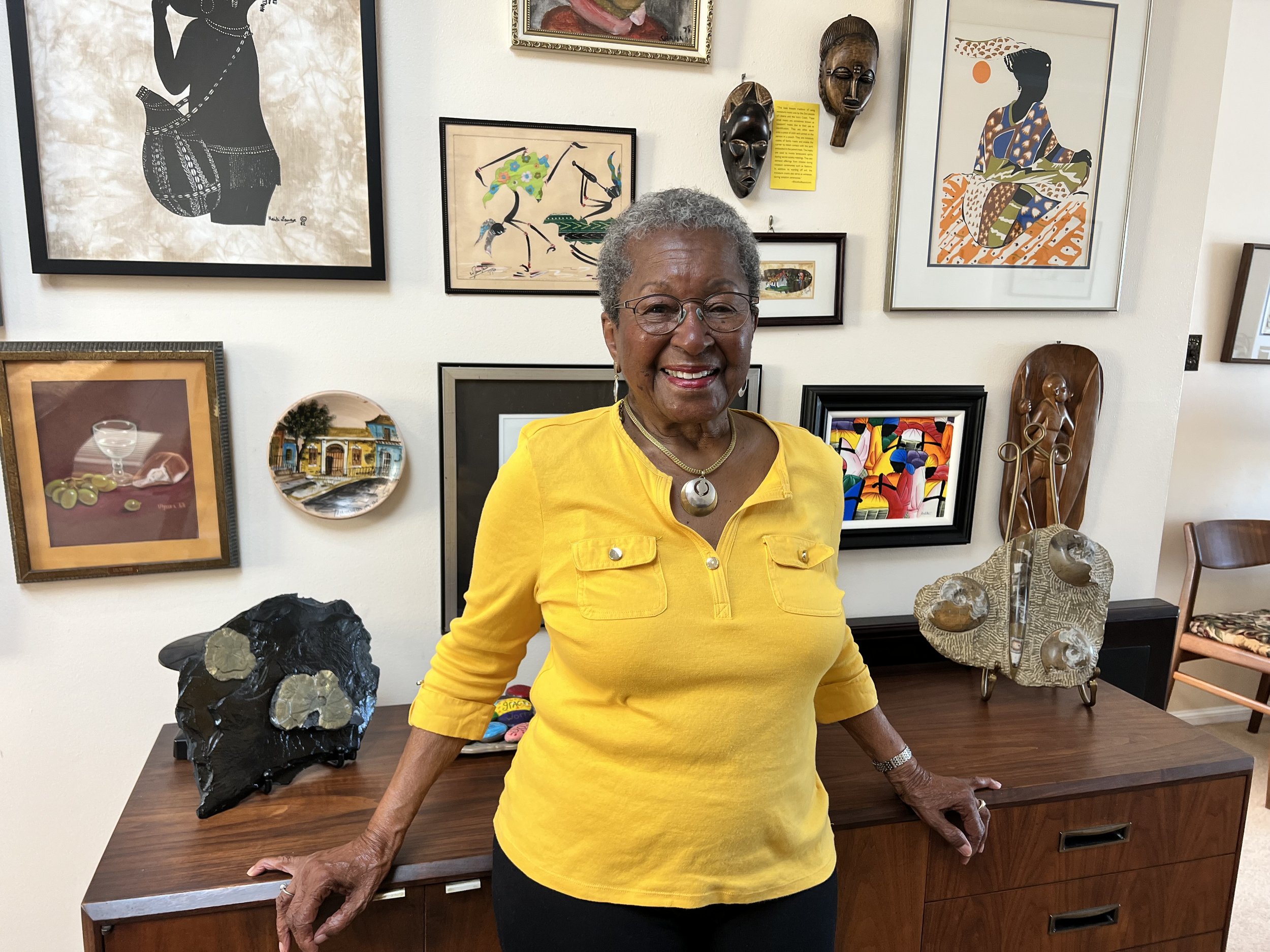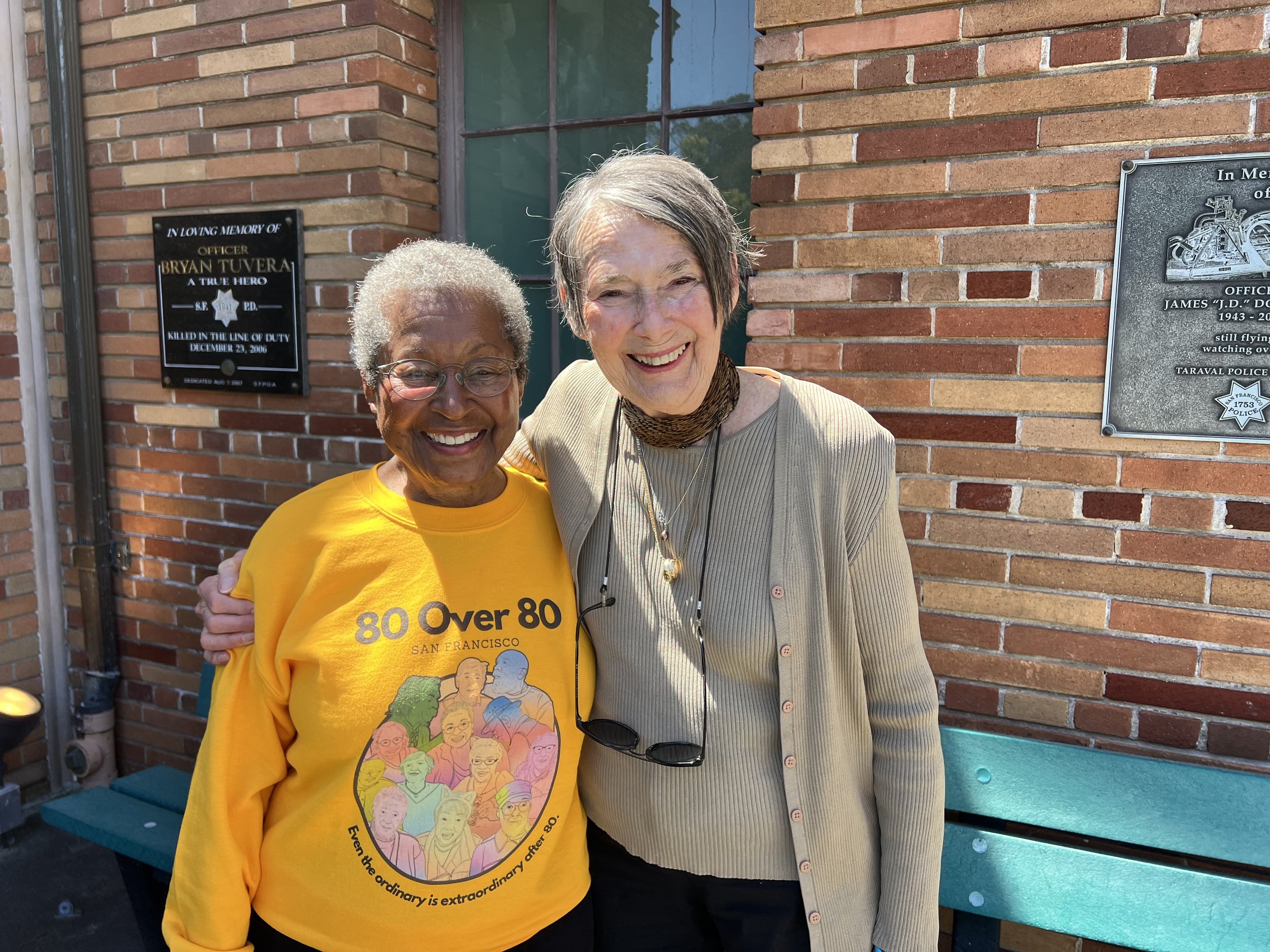Sunset Profile: Dorothy Lathan Is a Trailblazer in the Sunset and in Life
Dorothy Lathan
When Dorothy and Arthur Lathan bought their dream home near the Great Highway in 1960, they knew they were among the first African Americans to settle in the Sunset. They assumed other Black residents would soon follow to the affordable, desirable neighborhood.
Dorothy, now 90, has seen a lot of change over the decades. Many of Dorothy’s original neighbors along 48th Avenue were police officers, teachers, and firefighters. Now she shares the block with doctors, lawyers, and surfers.
Eventually, Asian families joined the mix of Irish and Italian families who had defined the Sunset. The influx of Black neighbors Dorothy hoped for did not materialize, as San Francisco’s Black population has steadily decreased the past 50 years. Yet Dorothy feels welcomed and supported today in ways that she and her husband didn’t experience when they moved in.
Dorothy has never stopped being a trailblazer. With her captivating exuberance and dedication, she is a vigorous 90-year-old who has made her mark in the city she loves.
From Arkansas to San Francisco
Born in tiny Forrest City, Arkansas – named for Nathan Bedford Forrest, the first Grand Dragon of the KKK – Dorothy had the courage to blaze her own path. Despite her family’s poverty, she attended Lincoln University in Missouri, where she met and married Art Lathan.
Art joined the Army, which moved the couple to San Francisco and deployed him to Korea. Instantly in love with the city, Dorothy began a 32-year career with the San Francisco Unified School District and launched a lifetime of civic activism.
When Art returned, the couple calculated that their $69 a month rental in Hunters Point was too expensive. Another rental ended when the owner died. Then unexpectedly, a real estate agent showed them a home they could afford to buy on 48th Avenue.
“It was a stroke of luck,” Dorothy says. “This was 1960, when discrimination was still legal. We were used to hearing, ‘We don’t rent to Negros.’”
San Francisco’s westside neighborhoods infamously didn’t allow non-white residents to purchase homes when they were built from the 1920s until the 1960s. Even San Francisco Giants baseball star Willie Mays was denied a house he wanted to buy near Mt. Davidson in 1957.
Dorothy and Art didn’t encounter racism when they moved to the neighborhood, but they had little contact with neighbors, living their active professional, civic, and social lives elsewhere in the city.
“We loved our house,” she says. “We doubled the size of the house as our family grew. We had three children and lived three blocks from the Zoo, across the street from the ocean, down the street from the library, and around the corner from three schools. It was perfect for us.”
Trailblazing at the school district and at City Hall
Three years after moving to the Sunset, Dorothy faced challenges in her job as a teacher. She battled a school district that subjected Black teachers to various discriminatory practices, including assigning them only to majority-Black schools.
Dorothy won her battle with the district and became the first Black teacher at Columbus Elementary in the Inner Sunset, now Alice Fong Yu Elementary. After holding a variety of teaching and administrative positions with SFUSD, she retired as a principal in 1993.
Dorothy was making a name for herself, and then-Mayor Dianne Feinstein appointed her to the city’s first rent control board. Dorothy and Art, then president of the San Francisco chapter of the NAACP, joined the Mayor’s delegation to Abidjan, Ivory Coast, when it was named as a sister city to San Francisco.
Dorothy was the first woman president of Youth for Service, which helped disadvantaged teens, and president of the Black Leadership Forum. Through their activism, she and Art met one of the giants of civil rights, Dr. Martin Luther King Jr.
“That’s my life – seeing what we can do about this country and its racism,” she says.
Beginning in 2000, Dorothy worked with former Mayor Willie Brown and others to develop the city’s Museum of the African Diaspora (MoAD) to focus on the Black presence in San Francisco.
“After urban renewal displaced so many Black people, can’t we have at least one thing that gives some permanence?" Dorothy asks.
Moving the needle today
According to Dorothy, the Black Lives Matter movement has moved the needle, opening doors and hearts in the city. But she has watched sadly as the Black population of the city has shrunk by more than half since 1970. She blames the decline on economic disparities that left too many with no hope that they would ever climb the economic ladder that she and Art did.
Today Dorothy enjoys attention and affection from her neighbors, who help take out her trash, tend to her home repairs, and bring her flowers. A couple she met on a cruise has invited her to join them on a trip to Hawaii later this year.
Dorothy forged a strong bond with Margaret Graf, a retired lawyer living nearby whose own life journey has remarkable parallels to Dorothy’s. Margaret suggested Dorothy as an interviewee for 80 Over 80, a project by Dr. Anna Chodos, a geriatrician, who has collected the diverse life stories of older San Franciscans.
Dorothy’s beloved husband Art died in 2022 after 69 years of marriage. Theirs was a joyous partnership of trailblazers who also loved to party, danced every day, traveled to every continent, (including Antarctica!), and rejoiced in their children, grandchildren, and great grandchildren. And always celebrated their life in the Sunset.
The Rest of the Story…
Dorothy Lathan and Margaret Graf
You’ve read Dorothy Lathan’s inspiring story. Now learn about her remarkable neighbor Margaret:
“I’d probably passed her house a thousand times. But we didn’t meet. We’re all enclosed in our private spaces.” That’s how Dorothy describes living two blocks from Margaret Graf along the Great Highway for 56 years without ever meeting. But when they did – in 2018 – they discovered remarkable parallels in their lives. Read about Margaret Graf’s journey.
Reported and written by volunteer community journalist Jan Cook. We encourage retired journalists and student journalists in high school and college to volunteer as writers for Supervisor Engardio’s newsletter. Interested? Apply here. Do you know a story you would like to see featured in the newsletter? Tell us about it here.


